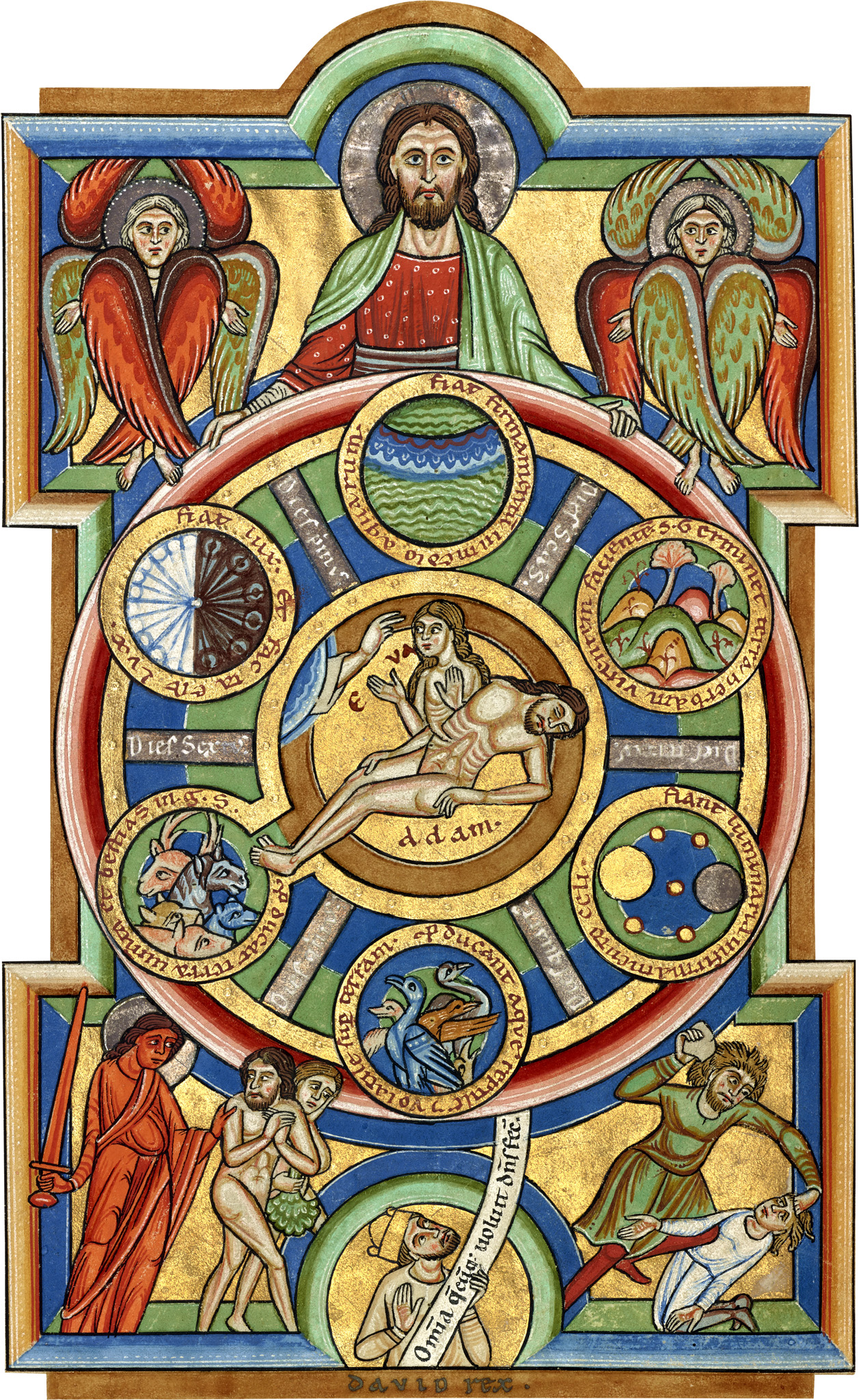TOP 10 FEATURES OF THE GETTY
1. Central Garden
These beautiful – and constantly changing – gardens were designed by visual artist Robert Irwin (b.1928). Wander along tree-lined paths and across a gentle stream to a reflecting pool with floating azaleas and ringed by beautiful specialty gardens.

Water feature in the Central Garden
2. Electric Tram
The Getty experience kicks off with a smooth five-minute ride up the hill from the entrance gate to the Arrival Plaza in a driverless, computer-operated tram.
3. Panoramic Views
On clear days, the views from the Getty’s hilltop perch are spectacular, especially around sunset. Take in the vastness of LA’s labyrinthine streets, the skyscrapers of Downtown, the Santa Monica Mountains, and the Pacific Ocean.
4. Illuminated Manuscripts
Shown on a rotating basis, the Getty’s collection of illuminated manuscripts covers the entire Middle Ages and Renaissance. The Stammheim Missal (1120) from Germany is among the most prized.

The Stammheim Missal
5. Drawings
Highlights of this collection, dating from the 14th to the 19th centuries, include Albrecht Dürer’s exquisite The Stag Beetle (1505) and da Vinci’s Studies for the Christ Child with Lamb (c.1503–6).
6. Shopping and Dining
There are plenty of options for a day-long visit, including the Museum Store and shops devoted to Impressionism, photography, and the latest exhibits. For refreshments, try the restaurant, café, kiosks, or gourmet picnics.
7. Decorative Arts
The Getty’s famous collection of French decorative art and furniture from the 17th and 18th centuries is displayed in a series of period rooms. The paneled Régence salon from 1710 is a must-see.
8. Photography
Known for its images from the early 1840s, the collection concentrates on work by European and American artists. Man Ray’s Tears is among the most famous pieces.
9. European Painting
Paintings from the Italian Renaissance and Baroque periods, as well as French Impressionism, are particularly well represented.
10. Outdoor Sculpture
Works by many of the 20th century’s greatest sculptors are displayed throughout the grounds. The sculptures, including work by Henry Moore, Alberto Giacometti, and Joan Miró, were donated by the late producer Ray Stark and his wife, Fran.
THE ARCHITECTURE
Roosting on its hilltop site on the edge of the Santa Monica Mountains, the Getty Center is an imposing presence, far removed from city noise and bustle. An amazing feat of architecture and engineering, it was designed by New York-based Modernist Richard Meier (b. 1934), an internationally acclaimed architect who also drafted the Paley Center for Media in Beverly Hills. For the Getty, Meier arranged the main buildings along two natural ridges connected by creative landscaping. Curvilinear elements, such as in the Museum Entrance Hall, combine with angular structures to create an effect of fluidity and openness. This is further enhanced by the use of travertine, a honey-colored, fossil-textured stone quarried in Italy that covers most buildings.

The Getty’s columns and vast scale give it the feel of a modern – and thoroughly American – Acropolis.

The Getty Center is distinctive for Meier’s curvilinear architecture.
TOP 10 BUILDING STATISTICS
1. Campus size: 24 acres (10 ha)
2. Campus altitude: 900 ft (275 m)
3. Cost: $1 billion
4. Cubic yards (of earth) moved: 1.5 million
5. Travertine used: 16,000 tons
6. Weight of each travertine block: 250 lb (113 kg)
7. Enameled aluminum panels: 40,000
8. Exterior glass: 164,650 sq ft (15,296 sq m)
9. Number of doors: 3,200
10. Length of tram ride: 0.75 miles (1.2 km)
